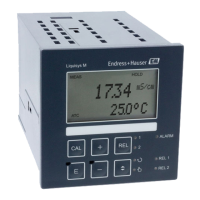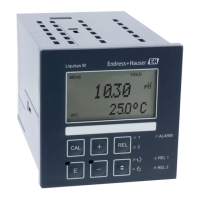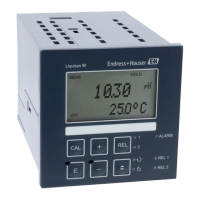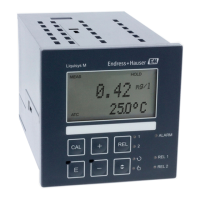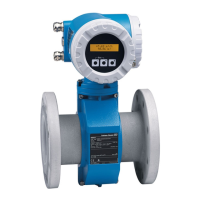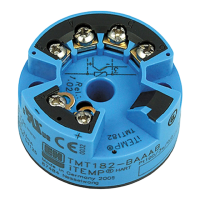Commissioning Liquisys M CLM223/253
70 Endress+Hauser
7.4.9 Concentration Measurement
The CONCENTRATION function group is only available for devices with a Plus Package.
The transmitter can convert from conductivity values to concentration values. For this
purpose, the operating mode is first set to concentration measurement (see field A1).
Afterwards, in the measuring device you must specify the basic data on the basis of which
the concentration is to be calculated. You require the conductivity characteristic curves of
the medium for this.
In the case of conductive sensors, the effects of polarization in the boundary layer between
the sensor and medium restrict the measuring range. The transmitter can detect
polarization effects by using a smart signal analysis process. Error message E071 is
displayed.
You can either refer to your data sheets for these characteristic curves or determine the
characteristic curves yourself.
1. Create samples of the medium in the concentrations that occur in the process.
2. Then measure the uncompensated conductivity of these samples at temperatures that
also occur in the process.
• For variable process temperatures:
If variable process temperatures are to be taken into consideration, you must
measure the conductivity for at least two temperatures (ideally the minimum and
maximum process temperature) for the samples created. The temperature values of
the various samples must be identical in each case. The temperatures must be at
least 0.5 °C apart.
At least two samples of different concentrations, taken at two different
temperatures in each case, are required as the transmitter needs at least four points
in the table (this must include the minimum and maximum concentration values).
• For constant process temperatures:
Measure the differently concentrated samples at this temperature. At least two
samples are required.
At the end you should have measuring data which resemble those shown in the following
figures.
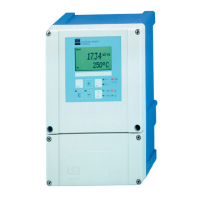
